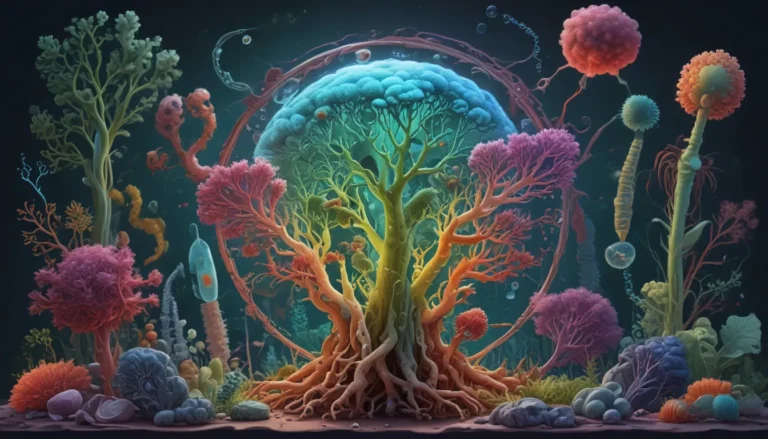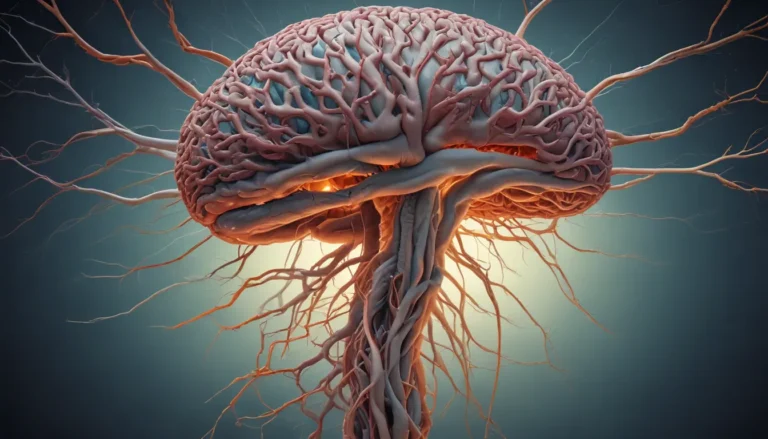A Note About Images: The images used in our articles are for illustration purposes only and may not exactly match the content. They are meant to engage readers, but the text should be relied upon for accurate information.
Ecology, the study of interactions among living organisms and their environment, unveils the intricate systems that govern the natural world. Understanding the levels of organization in ecology is paramount to protecting the delicate balance that sustains life on our planet. From individual organisms to entire ecosystems, each level plays a crucial role in shaping biodiversity and ecosystem functioning. Let’s dive into the enigmatic facts about ecology levels of organization to unravel the mysteries of nature and deepen our appreciation for the interconnected web of life.
Delving Into the Levels of Organization in Ecology
At the heart of ecological study lies the concept of levels of organization, which categorize ecological units based on their hierarchical structure. These levels provide a framework for understanding the complex relationships between organisms and their surroundings, offering valuable insights into the functioning of ecosystems. Let’s journey through the diverse dimensions of ecological organization, exploring each level in detail to uncover the wonders of the natural world.
The Biosphere: Earth’s Highest Level of Organization
The Biosphere stands as the pinnacle of ecological organization, encompassing all living organisms on Earth and the diverse environments in which they thrive. From the depths of the oceans to the towering mountains, the Biosphere harbors a complex and interconnected system that sustains life on our planet. Understanding the Biosphere is crucial for grasping the intricate web of interactions that shape Earth’s biodiversity and ecological balance.
A Closer Look at Individual Organisms
Individual organisms, whether towering trees or microscopic microorganisms, serve as the building blocks of ecological systems. Each organism possesses unique characteristics and functions within its environment, contributing to the overall balance of ecosystems. Through behaviors and physiological processes, individual organisms play a vital role in maintaining ecological equilibrium and sustaining life within their respective habitats.
Unraveling Population Dynamics
Populations consist of groups of individuals of the same species living in a specific area and interacting with one another. These interactions, such as reproduction and competition for resources, shape the growth and distribution of populations. By studying population dynamics, ecologists gain insights into the mechanisms driving species abundance, distribution, and diversity within ecosystems.
The Intricacies of Ecological Communities
Communities, comprising multiple populations of different species within a shared habitat, exemplify the interconnectedness of life within ecosystems. From the towering trees to the buzzing insects, each species within a community plays a unique role in maintaining biodiversity and ecosystem stability. Interactions between species shape the dynamics of communities, highlighting the interdependence and resilience of ecological systems.
Exploring the Ecosystem: A Harmony of Life and Environment
Ecosystems represent specific areas where living organisms interact with one another and with their physical surroundings. These intricate networks encompass both biotic and abiotic components, such as soil, water, air, and climate, influencing the functioning of communities. From the microscopic world of microbes to the grandeur of rainforests, ecosystems showcase the diverse array of life forms and their interwoven relationships.
Discovering Biomes: Nature’s Grand Tapestry
Biomes, large-scale ecological regions characterized by distinct climate patterns and vegetation, shape global climate patterns and support diverse ecosystems. From the scorching deserts to the icy tundras, each biome harbors a unique array of flora and fauna adapted to its specific conditions. Understanding biomes sheds light on the interconnectedness of Earth’s ecosystems and the resilience of life in varied habitats.
Navigating Earth’s Hydrosphere
The hydrosphere, comprising all the water on Earth’s surface, sustains life and regulates climate, nutrient cycling, and habitat availability for aquatic organisms. From vast oceans to meandering rivers, water plays a vital role in shaping ecosystems and supporting a myriad of aquatic life forms. The hydrosphere’s delicate balance is essential for maintaining biodiversity and ecosystem health.
Embracing the Lithosphere: Earth’s Solid Foundation
The lithosphere, Earth’s solid outer layer consisting of rocks, minerals, and landforms, provides a physical foundation for terrestrial ecosystems. Supporting plant roots, burrows, and habitats, the lithosphere plays a vital role in nutrient cycling and ecosystem functioning. Understanding the lithosphere’s role in ecological processes unveils the interconnectedness of life above and below ground.
A Glimpse Into the Atmosphere: Earth’s Gaseous Envelope
The atmosphere, a layer of gases enveloping Earth, regulates climate, provides essential components for life, and shields against harmful radiation. Home to a myriad of organisms from soaring birds to microscopic microbes, the atmosphere influences weather patterns and ecosystem dynamics. Exploring the atmosphere’s role in ecological systems unveils the intricate relationships between life and the air we breathe.
Venturing Into Ecotones: Nature’s Transition Zones
Ecotones, transitional areas where different ecosystems converge, showcase a mix of species and unique environmental conditions. From the edge of forests to river-ocean interfaces, ecotones facilitate the exchange of energy and resources between ecosystems. These dynamic zones play a vital role in biodiversity and highlight the interconnectedness of adjacent habitats.
Unveiling Trophic Levels: Feeding Positions in Ecological Systems
Trophic levels represent feeding positions in a food chain or web, illustrating the transfer of energy from producers to consumers. From plants harnessing sunlight to apex predators, each trophic level plays a crucial role in energy transfer and ecosystem dynamics. Understanding trophic relationships unveils the flow of energy through ecological systems and the interdependence of species within food webs.
Charting Energy Pyramids: Flow of Energy in Ecosystems
Energy pyramids graphically represent the flow of energy through trophic levels in ecosystems, highlighting the diminishing energy transfer from producers to consumers. The pyramid shape illustrates the dependence of higher-level consumers on a broader base of producers, emphasizing the importance of primary productivity in sustaining ecological communities. Exploring energy pyramids unveils the efficiency of energy transfer within ecosystems and the role of producers in supporting diverse trophic levels.
Unraveling Biogeochemical Cycles: Nutrient Cycling in Ecosystems
Biogeochemical cycles, such as the carbon, nitrogen, and phosphorus cycles, involve the movement of essential nutrients through living organisms, the atmosphere, lithosphere, and hydrosphere. These cycles are essential for recycling and availability of nutrients, sustaining ecosystem productivity, and supporting life. Understanding biogeochemical processes unveils the intricate pathways through which nutrients flow within ecosystems, shaping the health and resilience of ecological systems.
Embracing Symbiotic Relationships: Interactions Between Species
Symbiotic relationships entail close and long-term interactions between different species, ranging from mutualistic to parasitic associations. These relationships play a crucial role in shaping ecological communities, highlighting the interconnectedness of species and their reliance on one another for survival. From pollinators and flowers to predators and prey, symbiotic interactions showcase the diversity of ecological relationships and the interdependence of life within ecosystems.
Embracing Ecological Succession: A Story of Change and Renewal
Succession, the gradual change in species composition and structure of ecosystems over time, plays a vital role in renewal and regeneration. From primary succession in newly formed areas to secondary succession in disturbed habitats, ecological communities undergo dynamic changes in response to environmental disturbances. Understanding succession processes unveils the resilience and adaptability of ecosystems in the face of change, highlighting nature’s capacity for renewal and transformation.
Confronting Climate Change: Ecological Challenges in a Changing World
Climate change, driven by human activities, poses significant challenges to ecological systems, altering temperature patterns, weather events, and natural habitats. These changes have profound implications for species distributions, food webs, and ecosystem resilience, necessitating adaptation and mitigation efforts to safeguard biodiversity and ecosystem health. Addressing the impacts of climate change is vital for ensuring the long-term sustainability of ecosystems and the species within them.
Championing Conservation and Sustainability: A Call to Action
Conservation efforts, including habitat protection, endangered species conservation, and sustainable resource management, are essential for maintaining ecological balance. By preserving biodiversity and adopting sustainable practices, we can safeguard the health and resilience of ecosystems for future generations. Embracing the principles of conservation and sustainability is key to ensuring a harmonious coexistence between humans and the environment, fostering a future where nature thrives and biodiversity flourishes.
The Significance of Ecological Understanding: Nurturing a Sustainable Future
Ecological study enriches our understanding of the natural world, unveiling the intricate connections between organisms and their environment. By delving into ecological principles and processes, we gain insights into ecosystem functioning and environmental conservation. The knowledge derived from ecological research informs conservation strategies, sustainable practices, and our interactions with the natural world, guiding us towards a more sustainable future where nature’s diversity thrives.
Delving Into the FAQs: Answering Your Burning Questions on Ecology
- What are the different levels of organization in ecology?
-
The different levels of organization in ecology include individual, population, community, ecosystem, biome, and biosphere.
-
How does the individual level of organization relate to ecology?
-
The individual level focuses on interactions between an organism and its environment, encompassing behaviors and physiological processes.
-
What is a population in ecology?
-
A population refers to a group of individuals of the same species living in a specific area and interacting with each other.
-
How does a community differ from a population?
-
A community comprises multiple populations of different species coexisting and interacting within a shared habitat.
-
What is an ecosystem?
-
An ecosystem represents a community of organisms interacting with each other and with their physical environment, incorporating both biotic and abiotic components.
-
What is a biome?
-
A biome denotes a large geographic area with similar climate conditions, determining the types of plants and animals that can thrive there.
-
What is the biosphere?
-
The biosphere encompasses all Earth’s ecosystems, including interactions between living organisms and their environments.
-
Why is biodiversity vital in ecology?
-
Biodiversity contributes to ecosystem stability, health, and resilience, supporting ecological processes and providing essential services.
-
How can human activities impact ecology levels of organization?
-
Human activities, such as deforestation, pollution, and climate change, can disrupt ecological balance, jeopardizing biodiversity and ecosystem health.
-
What can individuals do to preserve ecology levels of organization?
- Individuals can promote sustainability, support conservation initiatives, and raise awareness about environmental protection to safeguard ecosystems for future generations.
Conclusion
In conclusion, the levels of organization in ecology unveil the intricate tapestry of life on Earth, showcasing the interconnectedness of organisms and their environments. From individual organisms to ecosystems, each level contributes to maintaining ecological balance and sustaining biodiversity on our planet. By delving into the enigmatic facts of ecological organization, we deepen our appreciation for nature’s complexity and the significance of preserving Earth’s diverse ecosystems.
Ecology’s levels of organization offer a window into the wonders of the natural world, inviting us to explore the mysteries of life and the intricate relationships that shape our planet. By embracing ecological principles and practices, we can work towards a sustainable future where humans and nature coexist harmoniously, fostering a world where biodiversity flourishes and ecosystems thrive.
Your Journey into Ecology Awaits
Embark on a journey through the diverse dimensions of ecological organization, unraveling the secrets of nature’s interconnected web. From the microscopic world of individual organisms to the grandeur of Earth’s diverse biomes, each level of organization unveils a new chapter in the story of life on our planet. Join us as we delve into the enigmatic facts of ecology and nurture a deeper understanding of the world around us. Let curiosity guide your exploration, and may the wonders of ecology inspire a lifelong passion for nature’s mysteries.






